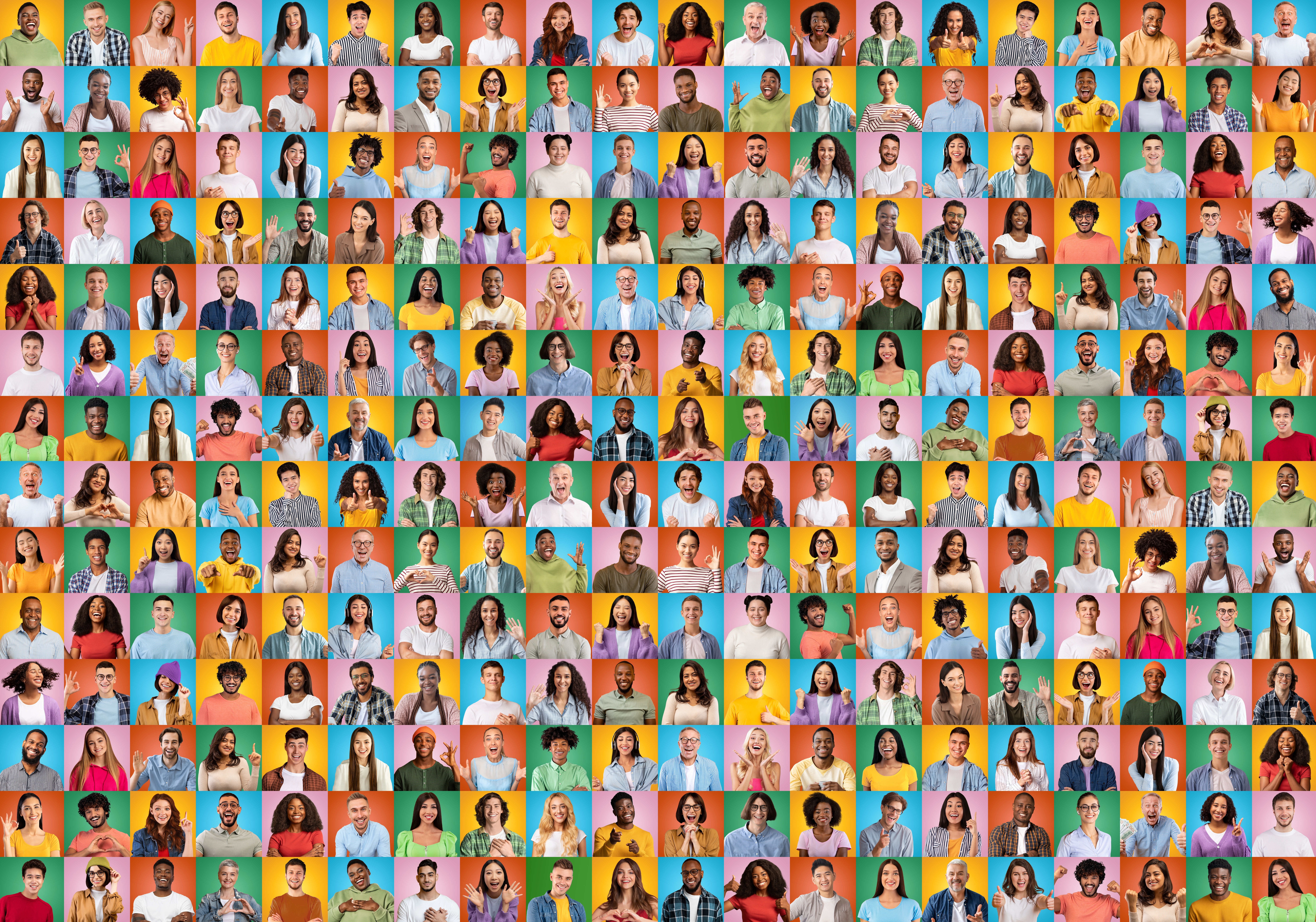The Kinds of Data You Can Use to Create Personalized Videos

Video is one of the most effective ways to connect with your audience. However, in today's fast-paced digital age, generic videos are no longer enough. Personalized videos are the way forward, and data is the key to creating them. In this article, we will explore the different types of data that you can use to create personalized videos that resonate with your audience.
What Is Personalized Video?
Personalized video is a type of content that is tailored to a specific viewer. It uses data to create a video that is unique to each person, making the content more relevant and engaging. Personalized video goes beyond just adding a viewer's name to the video. It includes elements like their location, interests, and previous interactions with your brand. This type of video allows you to create a one-to-one connection with your audience, which is crucial in today's marketing landscape.
Why Use Personalized Video?
Personalized video is a powerful tool for businesses looking to improve their marketing efforts. Here are some of the reasons why you should consider using personalized video in your marketing strategy:
Increased Engagement
Personalized videos have been shown to be more engaging than generic videos. When viewers see their name or other personal details in the video, they are more likely to pay attention and remember the content. This is because personalized videos create a sense of connection and relevance that generic videos lack. By using personalized video, you can capture the viewer's attention and keep them engaged throughout the video.
Additionally, personalized videos can help create a more emotional connection with the viewer. By tailoring the content to the viewer's interests and preferences, you can create a video that resonates with them on a deeper level. This emotional connection can help build brand loyalty and increase the likelihood that the viewer will share the video with others.
Better ROI
Personalized video can help improve your ROI by increasing conversion rates and reducing customer churn. When you create personalized videos that are tailored to each viewer, you can create a more compelling call-to-action that is more likely to convert. For example, if you include the viewer's name in the video and ask them to take a specific action, such as signing up for a newsletter or making a purchase, they are more likely to do so.
Personalized video can also help reduce customer churn. By providing relevant and useful content to each viewer, you can create a better customer experience that encourages them to stick around. This can help reduce the likelihood that they will switch to a competitor or stop using your product or service.
Improved Customer Experience
Personalized video can help create a better customer experience by providing relevant and useful content to each viewer. By tailoring the content to the viewer's interests and preferences, you can create a video that is more useful and informative. This can help improve the viewer's perception of your brand and increase their likelihood of engaging with your content in the future.
Personalized video can also help create a more seamless customer experience. By using data to create a video that is tailored to each viewer's stage in the customer journey, you can create a more cohesive and effective marketing campaign. For example, if you create a personalized video that is designed to educate viewers about a specific product or service, you can help move them further down the funnel and increase the likelihood that they will make a purchase.
The Role of Data in Personalized Video
Data is the foundation of personalized video. It is the information that you use to create a unique video for each viewer. The more data you have, the more personalized you can make your video. Here are some of the ways data plays a role in personalized video:
Personalization with Customer Data
Personalized video uses customer data to create a video that is unique to each viewer. This data can include information like their name, location, interests, and past interactions with your brand. By using this data, you can create a video that speaks directly to the viewer and provides them with content that is relevant and useful.
To collect customer data for personalized video, you can use a variety of methods such as website tracking, surveys, and customer feedback. It is important to ensure that the data you collect is accurate and up-to-date so that you can create personalized videos that are effective and relevant to the viewer.
Creating Personalized Videos with Customer Data
With customer data, you can create personalized videos that speak directly to each viewer's needs and interests. For example, if you know that a viewer has recently purchased a specific product, you can create a personalized video that provides them with tips and tricks for using that product. Alternatively, if you know that a viewer is interested in a specific topic, you can create a personalized video that provides them with more information on that topic.
When creating personalized videos with customer data, it is important to ensure that the video is tailored to the specific needs and interests of the viewer. This can help increase engagement and improve the effectiveness of the video.
Personalized Video Content Using Data
Data can be used to create personalized video content that is tailored to the specific needs of your audience. For example, if you are targeting a specific demographic, you can use data to create video content that speaks directly to that demographic. Additionally, data can be used to create video content that is tailored to the viewer's stage in the customer journey.
To create personalized video content using data, it is important to ensure that the content is relevant and useful to the viewer. This can help increase engagement and improve the effectiveness of the video. Additionally, it is important to ensure that the data you use to create the video content is accurate and up-to-date.
The Types of Data Used in Personalized Video
There are several types of data that you can use to create personalized videos. Here are some of the most common data sources used in personalized video:
Demographic Data
Demographic data includes information like age, gender, and location. This data can help you create videos that are tailored to specific demographic groups. By using demographic data, you can create videos that resonate with the target audience, resulting in increased engagement and better ROI.
For example, if you are targeting a younger audience, you might create a video that uses more vibrant colors and energetic music. Alternatively, if you are targeting an older audience, you might create a video that uses more subdued colors and a calmer tone.
Behavioral Data
Behavioral data includes information about how viewers interact with your brand. For example, you can use data about which products a viewer has viewed or purchased to create a video that highlights those products. By using behavioral data, you can create videos that are tailored to the viewer's interests and needs, resulting in increased engagement and better ROI.
For example, if you know that a viewer has recently viewed a specific product on your website, you might create a video that provides them with more information about that product. Alternatively, if you know that a viewer has abandoned their shopping cart, you might create a video that offers them a discount code to encourage them to complete their purchase.
Contextual Data
Contextual data includes information about the viewer's environment. For example, if it's a hot day, you might include footage of people enjoying your product in the sun. By using contextual data, you can create videos that are relevant to the viewer's current situation, resulting in increased engagement and better ROI.
For example, if you are promoting a product that is designed for use in the winter, you might create a video that shows people enjoying the product in the snow. Alternatively, if you are promoting a product that is designed for use in the summer, you might create a video that shows people enjoying the product in the sun.
Psychographic Data
Psychographic data includes information about the viewer's personality, values, and attitudes. This data can help you create videos that resonate with specific personality types. By using psychographic data, you can create videos that are tailored to the viewer's personality, resulting in increased engagement and better ROI.
For example, if you are targeting viewers who value sustainability, you might create a video that highlights the eco-friendliness of your product. Alternatively, if you are targeting viewers who value luxury, you might create a video that highlights the premium features of your product. By using psychographic data, you can create videos that resonate with the viewer on a personal level.
Best Practices for Using Data in Personalized Video
Here are some best practices for using data in personalized video:
Collect data ethically
When collecting data for personalized videos, it's crucial to do so ethically and with the viewer's consent. You should be transparent about what data you're collecting, how you're going to use it, and how long you're going to keep it. Make sure you're following all applicable laws and regulations, and that you're respecting people's privacy. Be careful not to collect sensitive information without a good reason, and always give people the option to opt-out of data collection.
Use data to create relevant content
To create effective personalized videos, you need to use data that is relevant to the viewer and helps you create content that is useful and interesting to them. This can include demographic data, behavioral data, psychographic data, and contextual data. By using data effectively, you can create videos that speak directly to the viewer's needs and interests, increasing their engagement and likelihood to convert.
Use a data management platform
A data management platform (DMP) can be an essential tool for collecting and organizing the data you need to create personalized videos. A DMP can help you collect data from multiple sources, including your website, social media, and customer relationship management (CRM) software. It can also help you organize and segment your data, making it easier to use for personalized video creation.
Test and optimize
Testing and optimizing your personalized videos is key to creating effective content that resonates with your audience. By testing different versions of your videos and analyzing the results, you can identify what works and what doesn't, and optimize your videos accordingly. This can include tweaking the content, length, format, or distribution method of your videos. By continuously testing and optimizing, you can improve your videos' performance and create more effective videos in the future.
Examples of Personalized Video Using Data
Here are some examples of how companies have used data to create personalized videos:
Cadbury: Cadbury created a personalized video campaign that used Facebook data to create a unique video for each viewer. The video included the viewer's name and profile picture and showed them enjoying a Cadbury Dairy Milk bar.
Coca-Cola: Coca-Cola created a personalized video campaign that used the viewer's name to create a song. The video featured a group of musicians singing a song that included the viewer's name.
Netflix: Netflix created a personalized video campaign that used data from the viewer's viewing history to create a video that recommended shows and movies they might enjoy.
Conclusion
Personalized video is a powerful tool for businesses looking to improve their marketing efforts. By using data to create unique videos for each viewer, you can increase engagement, improve your ROI, and create a better customer experience. There are many different types of data that you can use to create personalized videos, including demographic, behavioral, contextual, and psychographic data. By following best practices and testing your videos, you can create effective personalized video campaigns that resonate with your audience.


